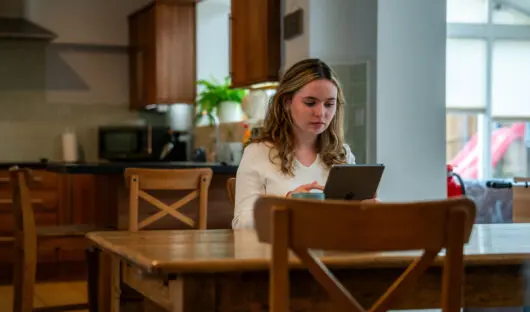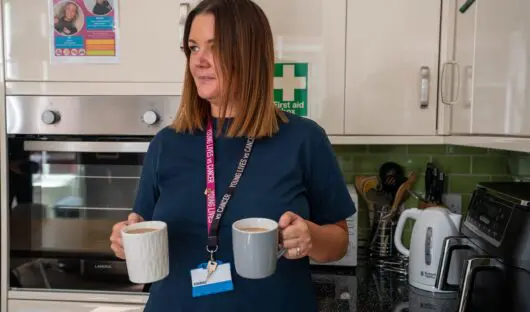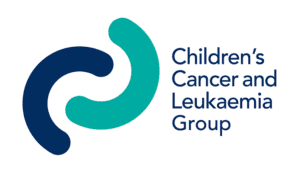Cancer diagnosis and tests for children
Diagnosis means finding out if your child has cancer and, if so, what type of cancer they have. Doctors will do this by assessing your child and their symptoms, and by doing tests.
When your child has symptoms that could be caused by cancer, they will be referred by their GP or local hospital to one of the following specialists:
- a paediatrician, who specialises in treating children
- a paediatric oncologist, who specialises in treating children with cancer
- paediatric haematologist, who specialises in treating blood disorders.
Most children with cancer will be treated in a Principal Treatment Centre within a hospital. Teenagers may be treated in a unit specially designed for teenagers and young adults with cancer.
Marie, mum of Jonathan diagnosed with ALLWhen Jonathan was diagnosed with leukaemia, it was a massive shock to us. What a world away from playing with his little brother on a hot sunny day just 24 hours earlier!
Various tests and scans will be done to diagnose your child’s illness and to monitor your child throughout treatment.
Tests are carried out for the following reasons:
- So that the cancer or leukaemia can be diagnosed accurately. Sometimes, it’s hard to tell the difference between specific types of cancer. Your child’s doctor may talk to other doctors to ask their opinion and advice about the diagnosis. They will have the support of other cancer experts around the UK and overseas.
- To see where the cancer is in the body and whether or not it has spread.
- To assess your child’s general health, as this may affect the treatment that is given.
Further tests may be needed before treatment begins. This may mean that treatment doesn’t start for a few days. Generally, cancer develops slowly, so delaying the start of treatment for a short time won’t make it less effective. It is important to know the type of cancer your child has and whether it has spread in the body. This information will help your doctor to choose the most effective treatment.
With some types of cancer it is important to start treatment straight away. Your child’s doctor will discuss this with you.
Some of the more common tests are described below. Several of these may be carried out again during the course of treatment to see how well the treatment is working. Some tests can also be used to check for any side effects of treatment.
Biopsy
If your doctor thinks that a tumour may be cancerous, a surgeon may remove part of it to examine under a microscope. There are two types of biopsy:
- Needle biopsy – a needle is put into the tumour through the skin to remove a small part of it. This test can be done under a local anaesthetic.
- Open biopsy – a piece of the tumour is taken during a small operation using a general anaesthetic. The surgeon may sometimes be able to remove the entire tumour rather than just take a sample.
The sample of cells is sent to a laboratory to be examined by a pathologist (a doctor who studies body tissues). They can tell if the sample is cancerous or not and, if it is, what type of cancer it is. It usually takes several days to get the results of a biopsy.
Blood tests
There are lots of different types of blood test. Blood tests may be done when your child is diagnosed, during treatment, and afterwards at follow-up appointments. The following tests may be done on your child’s blood:
- Full blood count (FBC). This test measures the number of different types of blood cells in the blood (red blood cells, white blood cells and platelets). This is one of the main ways to monitor the side effects of treatment.
- Blood chemistry. This test measures the levels of certain salts and proteins in the blood. It gives information about how well the body’s organs, such as the liver and kidneys, are working.
- Blood group and cross-match. Blood samples can be used to find blood from a donor that matches your child’s blood. Cross-matching is done in case a blood transfusion is needed during your child’s treatment.
- Blood culture. This is when microbiologists (people who study types of infection) check the blood to see if there’s any infection in it.
- Blood clotting. The blood may be looked at to see how quickly it clots and if there’s a risk of bleeding. Clotting may be affected by a cancer or cancer treatment.
- Other tests. Blood may also be taken to see if your child has had any viruses in the past such as measles, hepatitis, German measles (rubella), cytomegalovirus (CMV) or chickenpox (herpes zoster).
Bone marrow test
Some cancers can affect the bone marrow. This is the spongy material in the middle of some of our bones. It produces cells called stem cells, which develop into the three different types of blood cells:
- red blood cells, which carry oxygen around the body
- white blood cells, which are part of the immune system and essential for fighting infection
- platelets, which help the blood to clot and control bleeding.
To take a bone marrow sample, a needle is gently put into the hip bone and some of the marrow is drawn out with a syringe. This is then sent to a laboratory to be looked at.
This test is usually done under a general anaesthetic or sedation to make sure your child feels as little discomfort as possible. Older children may prefer to have a local anaesthetic. The bone where the sample is taken from might feel sore for a few days after the test.
A bone marrow test may be done when your child is diagnosed or at times during treatment.
Lumbar puncture
In some conditions, such as leukaemia or lymphoma, cancer cells can pass into the fluid that surrounds the brain and spinal cord (cerebrospinal fluid or CSF).
To see whether this has happened or not, a few drops of the CSF are removed. This is done by inserting a fine needle into the CSF between two spinal (vertebral) bones in the lower part of the spine. This is called a lumbar puncture and is usually done under a general anaesthetic.
The sample of CSF is then examined to see if any cancer cells are present.
Sometimes, as part of the cancer treatment, drugs are injected into the CSF. This is known as intrathecal chemotherapy.
Scans
X-rays
A tumour often looks different from healthy tissue when seen on an x-ray. An x-ray can show if there’s a tumour in the chest, tummy (abdomen) or bones.
Ultrasound scan
This test uses sound waves to build up a picture of the inside of the body. A gel will be spread on to the part of your child’s body being scanned. A small device like a microphone, which produces sound waves, is passed over the area. The sound waves are then converted into a picture by a computer.
Ultrasound scans are completely safe and are mainly used to look at the tummy (abdomen) and heart.
CT (computerised tomography) scan
A CT scan takes a series of x-rays, which build up a three-dimensional picture of the inside of the body. It takes 10–30 minutes and is painless, but your child may be given a sedative or general anaesthetic to make sure they lie still. Sometimes, special dyes are injected into a vein to make certain parts of the body show up better on the CT scan.
MRI (magnetic resonance imaging) scan
This test uses magnetism to build up a detailed picture of areas of the body. The scan is painless, but the machine is very noisy. It can look frightening, as your child may have to lie in a narrow tunnel. You’ll need to sign a consent form to confirm that your child doesn’t have any metal objects – such as dental braces – in their body, as the scanner uses strong magnetism. They may be given a sedative or general anaesthetic to make sure they lie still. They will also be given earplugs or headphones to wear. In some hospitals, children can watch videos while having an MRI scan. It may be possible for you to stay in the room with your child while they have the scan.
Bone scan
If your child has a bone tumour or a tumour that may have spread to the bones, this scan will show how much bone is affected. A small dose of a radioactive substance is injected into a vein, usually in the arm. The substance is absorbed by the bone. Abnormal areas of bone absorb more of the substance than healthy bone and are highlighted on the scanner as ‘hot spots’. The radiation dose is very low and not harmful.
PET (positron emission tomography) scan
A PET scan uses low-dose radioactive glucose (a type of sugar) to measure the activity of cells in different parts of the body. A very small amount of a mildly radioactive substance is injected into a vein, usually in the arm. A scan is then taken a couple of hours later. Areas of cancer are usually more active than surrounding tissue and show up on the scan. The radiation dose is very low and not harmful.
Other tests
GFR (glomerular filtration rate) test
This test shows how well the kidneys are working and excreting drugs. It is done before some types of chemotherapy and may be repeated during treatment. It involves having an injection of a radioactive dye into a vein. Blood tests are taken two, three and four hours later. Local anaesthetic cream may be used before the injection and the blood tests to make them less painful. The radiation dose is very low and not harmful.
Audiogram
Some cancer treatments may affect your child’s hearing. Because of this, your child may have an audiogram (hearing test) before and during treatment. This detailed hearing test is done in a quiet room in the hospital. Your child will be asked to listen to sounds at different frequencies through headphones or speakers.
Opthalmology
For some children, their sight may be harmed by the position of a tumour. The aim is to treat tumours before too much harm has been caused, and so prevent your child’s vision getting worse. Regular monitoring of vision is carried out in those children who are at an increased risk of their vision becoming impaired.
This information was written by the Children’s Cancer and Leukaemia Group (CCLG)
You might also want to look at
My child has cancer
If you're a parent or carer of a child diagnosed with cancer, get the right help and advice for us to support you.
Read more
Financial support
Cancer costs. But we provide grants and unlock crucial financial support when it comes to money.
Read more

